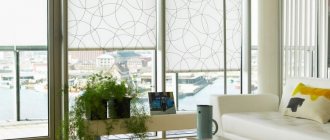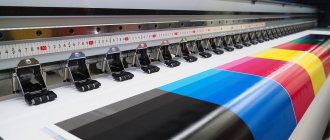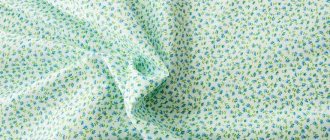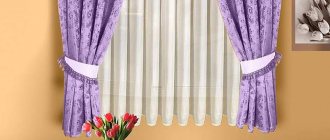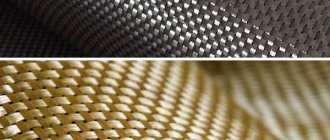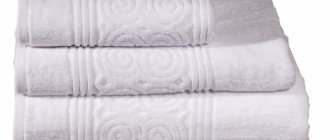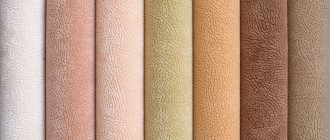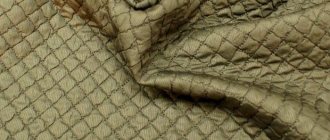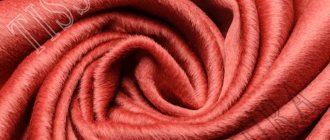People have learned to create batiks since time immemorial. This technique involves applying a design to fabric. Residents of Indonesia, India, Africa, and Japan were especially fond of art.
Women, of course, did such painstaking work. The technology for creating batik varies depending on the method of applying the design. It is better for beginners to start with simple techniques, and as their skill develops, move on to more complex options.
Types of batik
Batik experienced its heyday in the modern world in the second half of the last century. At that time this technique was extremely popular among hippies. Young people adopted the secrets of art from each other, resulting in original clothes with psychedelic patterns. Today, batik as a type of handicraft is back in fashion.
This technique can be performed in various ways:
- cold - when, before creating a pattern, a contour is applied to the fabric with a special compound;
- hot - the design is created using liquid wax, which is washed off with gasoline at the final stage;
- knotted - the fabric is first tied into knots or tied with thread, and then dipped in dye.
Sometimes painting is carried out without drawing an outline. This technique stands out as a separate type.
The most difficult thing is to create hot batik; mastery of this art does not come immediately; craftswomen master it as they gain experience. The cold method of creating batik is considered simpler. The knot technique can be considered just as simple and no less interesting. Already the first experiments using this method can please you with amazing results.
Cold batik
Cold batik differs from hot batik in that the reservation is carried out in a cold way. The reserve composition may be colorless, but may also have any color. For painting using the cold batik technique, a reserve based on paraffin and gasoline solvent is used. The artistic feature of this painting method is that the obligatory color outline gives the drawings a clear, graphic character. The reserve composition along the contour of the pattern is applied to the fabric using a glass tube of various diameters. In the cold batik technique, unlike hot batik, mainly natural silk is used, but the first experiments can also be done on thin cotton fabric. Batik on silk is fixed very well by steaming. After which it can be washed and ironed without fear that the paint will wash off or fade.
Cold batik comes in four types:
- Classic - the drawing is created using a closed cold reserve and painted in one layer.
- Multi-layered - the drawing is created using a closed cold reserve and painted in several layers.
- Open graphics - painted using the method of breaking the reserve line and mixing the color of adjacent planes.
- Free fabric painting - the design is created without using reserve mixtures. With this method, the design is applied to the fabric with free strokes, and only the final processing can sometimes be done using a reserve. There are several known ways to freely paint fabric: paints using a saline solution, paints with a thickener from the reserve, printing inks on fabrics, oil paints. All of the above methods of free painting require steaming, except for painting with oil paints. However, this type of batik does not need to be steamed, but in the future it cannot be washed and the surface must be protected from water drops falling on it. Free painting - performed in three techniques:
- watercolor technique - batik is painted wet with drying in the right places, or dry with special brushes
- stencil technique - batik is created using stencils and spray paint
- free painting - the fabric is impregnated with an aqueous solution of table salt or watercolor primer, and after drying it is painted with paints
Suitable fabric for batik
Painting in the batik style is somewhat similar to creating stained glass, but instead of glass, thin fabric is used as a basis. Dense material is not suitable for these purposes, since the reserve (composition for applying the contour) will not be able to saturate thick fibers well.
As a result, the paint will flow beyond the intended area, and the design will become sloppy. All types of batik are created only on thin natural fabrics. You can use cambric, silk, double thread. For beginning painters, cambric fabric is most suitable as a base.
Batik paints
Batik paints can be purchased in a set that includes a palette of different shades. For beginners, it is better to buy dyes separately. In order to try your hand, it is enough to purchase just a few color shades. You can take different types of paints to understand which one is more convenient for you to work with.
Based on their composition, the most commonly used paints can be divided into two groups - acrylic and aniline. Dyes must be marked accordingly:
- "For batik";
- "Silk";
- "SILK".
For those who are just starting to paint on fabric, it is better to choose dyes from domestic companies whose products are inexpensive. Imported paints are more expensive, but they have a more varied palette. Such dyes stay on the fabric longer and do not weigh it down. When creating batiks, plastisol paints can also be used; after they are applied, a luminous pattern appears on the fabric.
Acrylic paints
Acrylic paints are easier to use and can be easily fixed to fabric with an iron. They are produced in cans, jars, and tubes. Acrylic is a polymer material and dries quickly in air, so brushes and palettes must be washed immediately after use; later this will be much more difficult.
Paints on this basis are unstable, they are gradually washed off from clothes during the washing process. Color acrylic pigment is also available in powder form. Before application, the crystals are thoroughly rubbed so that the coloring is uniform. Acrylic paints are best used for paintings that will later decorate the interior.
Aniline dyes
Aniline dyes are fixed only with the help of steam, so they are more suitable for experienced craftsmen. Securing designs over steam is quite difficult. At the steaming stage, an inexperienced craftswoman can easily ruin the work. At the same time, aniline-based paints have their advantages.
They are more durable and paint the material better. From the inside, the design turns out as bright as on the front side. The dye does not weigh down the fabric, unlike acrylic. For those who intend to create batiks on a regular basis, it is advisable to stock up on an autoclave, in which the steam is at a high temperature and is under pressure.
Some imported dyes are sold complete with a fixative. In this case, the process of fixing the picture is simplified. The finished product is simply rinsed in a fixing solution. If aniline is used in powder form, it must be handled with caution, as this substance is poisonous and inhaling its particles can be harmful to health.
Choosing fabric for batik.
Today I will talk about the fabrics that I use in my work. This is mostly natural silk, of course. It's a pleasure to work with, looks great, and is also comfortable to wear. But natural silk is only the composition of the fabric. Natural silk can be thin, dense, soft, elastic, smooth, rough, even carpets are woven from it! Some types of silk are suitable for traditional painting, while others are more suitable for experimental painting. Some drape well and therefore look great in scarves, others hold their shape well and do not stretch, so they are better used for curtains and panels. Therefore, from the whole variety of silks, I have chosen several types and work mainly with them, sometimes turning to less common types of fabric.
Next I will talk about each type from the point of view of using silk in life: how it is worn, draped, etc., and from the point of view of the artist: how pleasant the fabric is to work with.
Atlas.
Most likely, when you hear the word “silk,” you imagine satin. It is he, the king of silks, who embodies all the best: noble shine, softness, beautiful folds, play of colors. True, some do not like it for its slipperiness and excessive tenderness. On thin satin, it is quite easy to get a snag or move the fibers when washing. Therefore, in my works I often use 14-density satin. It is not much heavier than 12-density satin, but at the same time its main threads are located more densely and the canvas is not so easy to injure.
I love satin because the colors flow easily on it, the colors look brighter than on other silks, and the satin always maintains its softness. I don't like the stretchiness. It can be quite difficult to draw straight lines on the atlas, especially closer to the edge, which cannot be pulled perfectly straight. In addition, satin has a face and a back, which is not very convenient for scarves.
Crepe de Chine.
This silk is just for those who do not like shine and slipperiness. Crepe de Chine has a slightly rough surface (which still remains silk, it cannot be compared with linen, for example). But they don’t like it precisely for this roughness and lack of shine. To each his own. At the same time, it is soft and drapes easily.
I have periods of great love for crepe de Chine, when I pay tribute to its ability to maintain a line with free painting, softness and restraint. There is no shine and luxury of satin, you give the nobility of crepe de Chine!)) But it also has its drawbacks: it stretches much more than satin, that is, with straight lines it is even more difficult, and can noticeably shrink in size after being removed from the frame and washed.
Toile.
The third whale of batik :) Or maybe the first. I made my first experiments in painting on it. It is cheaper than satin and crepe de Chine, does not stretch, is thin enough to be well saturated with reserve, and the colors on it do not change their saturation depending on the angle of incidence of the light. In general, he is easy to work with. But in the end it looks more modest than satin and crepe de Chine. It is not so soft, does not have a luxurious shine or interesting texture. Nevertheless, it is perfect for things that need to keep their shape (ties, pillowcases, curtains, clothes), for light summer scarves, or painted items with a lot of straight lines. And in my opinion, toile is the best fabric for panels.
Twill or twill.
I admit, I started this article because of twill. It is now my favorite fabric, but since I have not used it before, my customers may not be very familiar with it. That's why I praise her a little. So, twill, like a toile, has little stretch, so the most intricate painting is possible on it, it has a slight shine and an interesting texture. It is soft and drapes well. Identical on both sides. And a special point: Hermes scarves are mostly made from twill.
Disadvantages... I don’t see them in my love yet. Well, maybe you just don't like twill and love satin.
Chiffon.
I almost never use chiffon, but sometimes it happens, so I’ll describe it. Chiffon is a thin, slightly rough fabric. Good for clothing because it doesn't slip. For example, for thin capes. Or for scarves. A large, very large chiffon scarf can be packed in a very small handbag and taken out at the right time. Convenient for summer travel.
I don't like chiffon at work. It is too stretchy, dries quickly, and the paint does not apply very evenly to it. Maybe I just don't know how to cook it :)
Foulard.
I’ll also mention the foulard, to be fair, since I haven’t worked with it for a long time. Foulard is a thin silk fabric. Very thin, very tender. Hooks and shifts of the main threads are companions of the foulard. But it is softer than toile and can sometimes be preferable.
Not 100% silk fabrics.
I love working with silk. For me, as an artist, this is the ideal canvas on which the colors flow and play and the work moves with pleasure. Other fabrics are complex territory, sometimes it suggests new interesting solutions, sometimes it just adds complexity. But sometimes you get tired of silk and want something new and unusual.
Batiste, cotton/silk.
Interesting fabric. Not shiny, soft, with an interesting texture. Drapes well. For me this is a “winter” fabric, although it is quite thin and suitable for summer clothes too.
Since paints flow well on cambric, it can be used for painting using classical batik techniques. And its slightly rough surface is perfect for free-form painting. It should be taken into account that the colors on cambric are more muted than on 100% silk.
Wool/silk.
Winter fabric. Rough in appearance, with a pronounced texture, but quite soft. Excellent for free-form painting, but classic cold batik is quite difficult to do on it.
These are the fabrics I use. Almost any shawl or scarf can be repeated on a different type of fabric than it was originally made with. Therefore, do not hesitate to propose new solutions, perhaps this will benefit the old plot :)
How to make sketches for batik
Sketches for batiks are easy to create using a stencil or a simple template. Suitable pictures are simply downloaded from the Internet. Drawings can have any theme. Popular sketches include flowers, plants, abstract compositions, and portraits.
It is better to train on simple drawings; over time you will be able to move on to more complex sketches. By the way, craftsmen often take pictures for stained glass painting as a basis.
The sketch is drawn on paper without resorting to drawing small details. The size of the design should correspond to the size that needs to be obtained on the fabric. The contours of the sketch are outlined with a marker. After this, the design on the paper is attached to the fabric from the wrong side with paper tape. Through thin material, the contours will be easily visible. After this, you can proceed directly to painting on the fabric.
So what is batik fabric?
This is the name given to material painted using one of the technologies described above. It can be based on various fibers, both natural cotton or silk, and artificial, polyester, so the composition of the product of interest, as well as care recommendations, must be checked with the seller or on the label.
Home-made batik painting on fabric is also common. If you decide to try this hobby, then it is advised to choose a material with a plain weave, because the original fabric should be smooth and even to the touch. That is why it is not recommended to use fabric with twill weave.
Cold batik - execution technique
Hand painting on fabric requires patience in any case. At first, the drawing will take a lot of time. With the arrival of experience, acceleration will appear. It is better to do work in a well-ventilated area, since the reserve substance used to apply the contour releases substances that are harmful to the body. It's better to start with a small drawing.
Step by step technique:
- The fabric must be secured using an embroidery hoop to prevent it from sagging. To complete large format work you will need a special frame. In this case, the fabric is secured with special hooks included in the kit.
- Nearby are pre-prepared paints, a reserve substance and a glass tube for it. If the circuit is enclosed in a tube with a tip, a tube will not be needed.
- A paper sketch is placed under the material and secured at the bottom.
- Using a soft pencil, transfer the design onto the fabric.
- The designated contours are outlined with a reserve. It is convenient to draw the reserve substance into the tube using a syringe, placing it on the opposite end of the tube. The pear contracts and the reserve enters the tube.
- After the outline has dried, check it by running a damp brush over the fabric. It is necessary to ensure that the water does not cross the contour line.
- In those places where the contour turned out to be weak, it is repeated.
- Now you can start coloring the picture with paints.
After finishing the work, the batik is removed from the frame and the design is fixed with an iron. The temperature regulator must be set to the type of fabric. Each section of the pattern is ironed for 3-5 minutes. It is better to paint in a work coat or old clothes so as not to get stained with paint.
Features of painting on silk
Silk painting is suitable for more experienced craftswomen, because it is an expensive material that would be a shame to ruin. In this case, to create batik you will need paints designed specifically for silk. For a beginner, ready-made kits with a contour and pattern already applied to the fabric are suitable. The needlewoman will only have to paint the work like a child’s coloring book.
For those who have artistic skills, the free-style painting style is suitable. In this case, you will not need a pre-created template. During work, the craftswoman will be able to better demonstrate her creativity. In addition to silk paints you will need:
- round squirrel brushes;
- water tank;
- cloth napkin for brushes;
- cotton swabs;
- colored outlines;
- palette.
Having prepared everything you need, they begin to create the picture. This can be done either cold or hot. In the second case, you will additionally need melted wax. It is applied instead of a reserve substance using a thin brush or dripping through a tube.
After the wax outline has dried, painting begins. Landscapes made using the batik technique on silk turn out very bright and impressive. Even if only one flower is painted in the picture, it will look very elegant. Silk painting is often used to decorate the interior, placing the canvases in frames and hanging them on the wall.
Hot batik
Let me say right away that hot batik, among other things, is also one of the most difficult types of fabric painting. But on the other hand, the effect you get will be extraordinary, memorable, and very interesting. That’s probably why batik masters say that once you like hot batik, it’s hard to give it up later.
I haven’t decided for myself yet whether I like working with hot wax and everything else. To be honest, I have tried too little yet. But what the hot batik masters do is yes. Really like. So,
The essence of hot batik
They called him that for a reason. The fact is that the work here is carried out with wax melted over a fire (and therefore hot in temperature) (most often), paraffin, stearin or a mixture of them. They are quickly applied to the fabric using a special bristle brush (so that they do not have time to harden during the “path”). Ordinary brushes for batik are not suitable here.
There is a special device for applying a contour from molten wax, it is called chanting. Looks like that:
Areas that are covered with wax are not affected by the paint. You can achieve magnificent “flower sculpting” effects by combining painted and unpainted areas of the canvas. In addition, some effects are beautifully created in hot batik, for example, the “crackle” or “craquelure” effect.
After the work is ready, the wax is removed from the fabric using a hot iron and a pile of old newspapers. Much more simple -
Knot batik technique
The process of creating knotted batik is always a mystery. It's difficult to predict exactly what the finished drawing will look like. Even if you perform two jobs using the same technique, they will still differ from each other. This technique is often chosen by advanced masters. It’s easier for them to predict in advance how the painting will turn out.
During the work, the fabric is not only tied with a knot in several places, but also twisted. For the first time, you can create batik according to a sample by watching the corresponding video. In the future, there is usually a desire to experiment. To begin with, it is better to master the technique on not too expensive fabric, taking scraps of cambric or thin cotton.
What a beginner should consider when creating knotted batik:
- It is desirable that the fabric be light and plain.
- You will also need strong cotton threads for this work. They will play the role of a reserve, preventing paint from leaking to the neighboring area.
- In the middle of the napkin you need to mark the center and, holding it, make a cone out of the fabric.
- Then the material is pulled in several places with thread.
- You can fold the fabric differently - like an accordion.
- The threads should pull the fabric very tightly.
- The tied napkins are dyed using the immersion method.
Then the dye solution is allowed to drain, and the napkin is rinsed in a weak shampoo solution to remove paint that has not been absorbed. When using acrylic dyes, after drying, the workpiece is ironed to fix it.
The batik technique is very popular today as a hobby. Some needlewomen are seriously interested in painting on fabric and even begin to create products for sale. In the field of handicrafts, all professionals once started with a hobby, managing over time to become a real master of their craft, who embodies creative ideas, develops their own techniques, and constantly comes up with something new, without stopping there.
